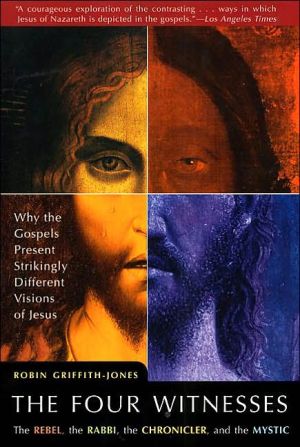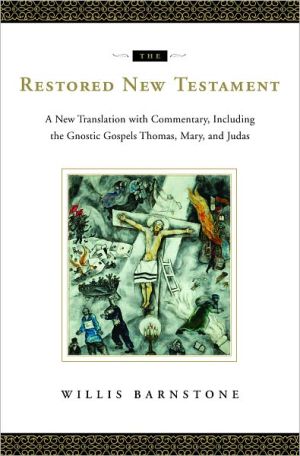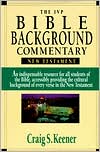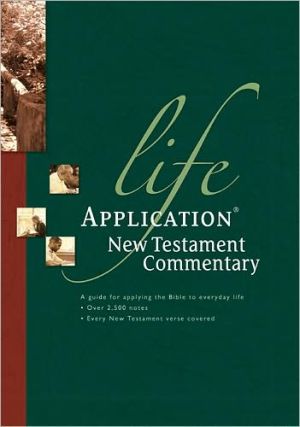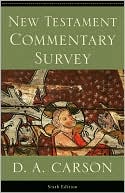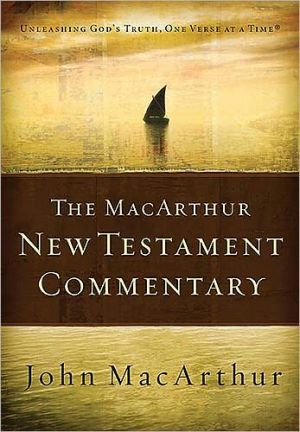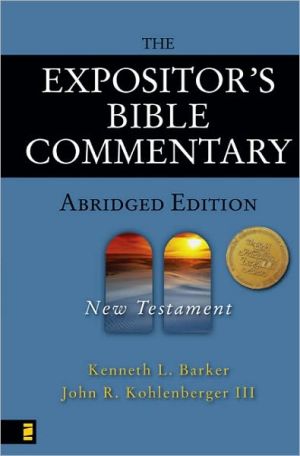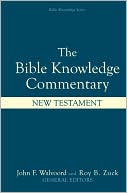Four Witnesses: The Rebel, the Rabbi, the Chronicler, and the Mystic
"Who Do You Say I Am?"\ Four Witnesses Offer Strikingly Different Testimony to the Life and Death of Jesus\ Bringing the stories of Jesus to life for the contemporary reader, Robin Griffith-Jones revives the origional power and intent of each of the four gospels. He presents a lively discussion of how and why each gospel was written, considering the substance and style of the testimony itself as well as the unique context of each story. Mark's gospel tells the rebel's story of Jesus as a...
Search in google:
Robin Griffith-Jones brings the story of Jesus to life for the modern reader as he revives the original power and intent of the Gospels of Mark, Matthew, Luke, and John as individual witnesses. He presents a lively discussion of how and why each of the four Gospels was written—considering the substance and style of the testimony itself as well as the unique context of each story and personality of each author—and examines the distinct light shed by each on Jesus' life, work, and death. Readers, then, can discover which perspective most clearly speaks to them and their own needs, hopes, and fears—and decide how to repsond to Jesus' challenge. But most importantly, readers can encounter in all four Gospels what one alone could not provide: a remarkably full and compelling presentation of Jesus and his powerful message. Publishers Weekly Griffith-Jones, an Anglican priest who is a chaplain and lecturer in New Testament Studies at Oxford University, makes a rather forgettable entr e into the already-saturated world of Jesus studies. The book begins with the tired observation that the Gospels offer not one, but four portraits of Jesus, and goes downhill from there. Griffith-Jones does little more than trot out the most basic findings of biblical scholarship: Mark was probably the first gospel to be written, while Matthew draws on Jewish traditions, sagely attempting to demonstrate that Jesus fulfilled Jewish prophecy. Matthew also stresses how similar Jesus is to Moses, depicting Jesus' brief asylum in Egypt as an echo of the Exodus story and highlighting the Sermon on the Mount's similarities to the revelation of the Torah at Mt. Sinai. Luke's Jesus is revolutionary, calling for a new order of compassion for the poor, for women and for other downtrodden folk; Griffith-Jones writes that "there is mercy at work in Luke's Jesus... by which our ordinary categories of rich and poor" are rendered meaningless. John is the most poetic and mystical writer, emphasizing more than the other evangelists the rebirth and transformation of individuals who knew Jesus. To justify yet another book on the historical Jesus aimed at the general reader, an author must offer either original insights or stylistic flair. Griffith-Jones does neither; skip his book. (May) Copyright 2000 Cahners Business Information.\|
Chapter One\ The Four Greatest Stories Ever Told\ \ Welcome to The Four Witnesses. I hope you will enjoy reading this book as much as I have enjoyed writing it. Of one thing you can, I think, be confident: You are the sort of reader for whom I have been writing. For you know the book's title and theme, you have picked it up and looked inside. To have just that much interest in Jesus and the gospels-even if you have never opened the gospels themselves-is enough; it is the enjoyment of such readers as yourself that I have had in mind. You may in the past have found Jesus enthralling or frightening, comforting or simply bemusing. There are good grounds within the gospels themselves for every such response. You may know the story of Jesus like the back of your hand; you may know just its outline; or you may give it a thought only when Easter and Christmas come around. Jesus himself asked, "Who do you say I am?" If his question has ever intrigued you-if it has ever just caught your imagination-then this book has been written for you.\ Matthew, Mark, Luke, and John: The names stand on the title pages of the gospels, four of the most influential books in the world. But who were these four writers? Where did they write and when? For whom? Here in these four short books, as the motto has it, is "The Greatest Story Ever Told." The description is familiar enough, but it is oddly misleading. The story told in each gospel is certainly as gripping and dramatic as any we could hope to hear. But the gospels give strikingly different versions of the same events.\ "Who do you say I am?" Jesus himself poses the question. Each gospel offers its own answer. Here arefour takes on the extraordinarily exciting and poignant story of Jesus, perhaps the most famous life ever lived on earth. Faced with four such versions, some readers have readjust one gospel and left the others aside; others have looked for a summary that merges everything in the four accounts into a single biography; others again have contrasted the different gospels' stories to see what single sequence of events and teaching, however meager, might underlie them all. But a further, more satisfyingand finally more exciting--possibility lies open: to take each one of the four stories on its own terms. Each portrays Jesus from a particular angle and with particular questions in mind. Some are questions to which the story of Jesus had already given rise within a few years of his death; others are questions--deep questions as vivid now as they were then-to which, so his followers thought, this Jesus offered the answer.\ Confronted as readers with all four gospels, we might think of ourselves as detectives on a case. To understand and assess the depositions put before us, we need (as any such detective needs) to know who these witnesses are, what makes them tick, what are the needs and purposes of their own that shape the evidence they offer. In The Four Witnesses we will hear afresh the story of Jesus. We will hear, too, of the decades that gave rise to these four gospels. Rome burned, Jerusalem was destroyed, the church felt the first pains of persecution. In The Four Witnesses a whole empire comes before our eyes: from rural Galilee to Rome itself, greatest city of the ancient world; from Jewish fishermen to the Emperor. When the cast of this drama comes alive, so can the stories come alive that were written to encourage those who were living, thinking-and suffering-through these dangerous years.\ The differences among our four witnesses do not lie just in details. Most telling are the distinctive flavor and shape of each gospel. Each gospel is remarkable in itself and is all the more striking when seen beside its neighbors. We need to took at them in turn. One of our most rewarding tactics will be to watch our authors edit the stories that they knew from those who had written before them. Each turns and shapes the stories to meet the needs of his own church. Readers need not be surprised, then, that we explore Mattes gospel before Matthew's. For Mark's gospel, it seems likely, was finished first, some thirty years after Jesus' death; here in The Four Witnesses we shall start with his evidence. Matthew and Luke both used Marks testimony, as well as other sources, when writing their own. We introduce them next. Finally, John: He stands slightly apart. His community had developed a different style of storytelling; if he did have any of our other three gospels before him as he wrote, he remolded their stories freely.\ Mark tells a dark story. All Europe and half of Asia Minor were in the power of Rome's emperor, backed by the most powerful army ever known and revered throughout his empire as a god. But there is another emperor: God himself. And Mark proclaims his viceroy: Jesus. Jesus had challenged the power of his own people's leaders, of demonic powers, of Rome itself and had been hung up on a cross to die. So much, it seems, for his claims and his kingdom. He dies, abandoned and in agony, with words of despair on his lips: 'My God, my God, why have you deserted me?"\ The leader had died, his pupils were scattered. Those young men had joined Jesus for the excitement and revolutionary purpose of this new master's way. How little they understood! They would follow him to the death, they said, and at the crucial moment they ran away. But this was not the end of the story. These pupils insisted that Jesus was once more alive. Their conviction led them to bear brave witness to this extraordinary "Lord." Some paid dearly for their courage. The Greek word for witnesses has become part of the English language, referring to those whose testimony cost them their lives: the martyrs.\ These followers of Jesus spread throughout the empire and took their message with them. Within twenty years of Jesus' death, they were in Rome. Here in the empire's capital is the setting for Mark's gospel.\ The crisis that Jesus' pupils faced had to be faced again by Mark's young church. In 64 C.E. a fire swept through Rome. Arson was suspected, and the Christians were soon blamed. Jesus' warning echoed down the years: 'All those, "he had said, "who want to follow after me must take up their cross an follow me. "The Christians in Rome were rounded up, tortured, and killed. Where in these terrible days was the victory of Jesus, mysterious rival to the emperor's power? Jesus asked, "Do you still not understand?" Mark knows his readers need all they help they can get if they are to open their eyes and see.\ Mark's story sounds simple enough. His storytelling is abrupt and unadorned; the Greek in which he writes is basic. We can still hear the accent of a story, once told in a different language and translated into Greek by missionaries, such perhaps as Mark himself, who would never be mistaken for its native speakers. But such translation was essential. Greek was a cosmopolitan language, the empire's lingua franca, in which the gospel must be heard if it was ever to spread. We first hear of the Jewish Mark as a young man at home in Jerusalem. We might imagine him writing his gospel, decades later, as an immigrant to Rome. He would have been based in the outskirts of the city. Most of Rome's Jews lived across the river Tiber from the city's center, engine of the empire and unparalleled in wealth and power, just as families from Europe in the twentieth century might live in Queens and cross the river to make their living in Manhattan. Such modern immigrants master English; it was just as important then for missionaries such as Mark to write in Greek.\ Jesus had been an artisan in a distant province of the empire. His pupils had been country people. His movement, it seemed, had been nipped in the bud. Few grandees in Rome would have heard of his claims; fewer still, if any, acknowledged them. But the forces of Rome, claimed the church should take care. For Jesus' followers maintained allegiance to their master still. Those in Rome made little fuss; they worked in the city and may well have served its elite, as an army of manual and clerical workers serves Manhattan's businesses now. The followers of Jesus crossed the Tiber, as thousands of others, and gazed on the city's marble temples and on the mansions of nobles and of government from which its vast empire was run. But this handful of Jesus' devotees remained quite clear: The emperor to whom all Europe did obeisance was not the king in whose hand this empire really lay. These "Christians" might suffer for the fire of 64 C.E., but there was suffering far worse still in store for those who resisted the reign of God and his Anointed, his "Christ." In Mark's stern, stark story we hear a rebel speak.\ The Four Witnesses. Copyright © by Robin Griffith-Jones. Reprinted by permission of HarperCollins Publishers, Inc. All rights reserved. Available now wherever books are sold.
AcknowledgmentsviiPrefaceixPrologueThe Four Greatest Stories Ever Told3Joy of Man's Desiring21 Book I Mark's StoryIntroduction to Mark45Storm Warning49Composing the Story68From Mark to Matthew90 Book II Matthew's StoryIntroduction to Matthew99The Promised Land?103The Old Israel and the New140From Matthew to Luke177 Book III Luke's StoryIntroduction to Luke189The Birth of the Church191The Old Order and the New229From Luke to John267 Book IV John's StoryIntroduction to John281From the Beginning to the End285The Trial317Dark Splendor342"It Is Completed"378 EpilogueThe Last Act383
\ From Barnes & NobleAlthough he taught the New Testament for years at Oxford, Dr. Robin Griffith-Jones is decidedly unsynoptic. Instead of seeking to harmonize the four gospels, he celebrates their differences, attempting to recapture their original power and intent. By examining Matthew, Mark, Luke, and John individually, he argues that each sought to convert readers, not to present history as we now understand it.\ \ \ \ \ Publishers Weekly - Publisher's Weekly\ Griffith-Jones, an Anglican priest who is a chaplain and lecturer in New Testament Studies at Oxford University, makes a rather forgettable entr e into the already-saturated world of Jesus studies. The book begins with the tired observation that the Gospels offer not one, but four portraits of Jesus, and goes downhill from there. Griffith-Jones does little more than trot out the most basic findings of biblical scholarship: Mark was probably the first gospel to be written, while Matthew draws on Jewish traditions, sagely attempting to demonstrate that Jesus fulfilled Jewish prophecy. Matthew also stresses how similar Jesus is to Moses, depicting Jesus' brief asylum in Egypt as an echo of the Exodus story and highlighting the Sermon on the Mount's similarities to the revelation of the Torah at Mt. Sinai. Luke's Jesus is revolutionary, calling for a new order of compassion for the poor, for women and for other downtrodden folk; Griffith-Jones writes that "there is mercy at work in Luke's Jesus... by which our ordinary categories of rich and poor" are rendered meaningless. John is the most poetic and mystical writer, emphasizing more than the other evangelists the rebirth and transformation of individuals who knew Jesus. To justify yet another book on the historical Jesus aimed at the general reader, an author must offer either original insights or stylistic flair. Griffith-Jones does neither; skip his book. (May) Copyright 2000 Cahners Business Information.\|\ \ \ Library JournalAt a time when most books on the Gospels are fixated on the earlier pieces or the documents that comprise them, Griffith-Jones, master of the Temple Church in London, focuses on the message of their complete texts. He takes some positions many scholars would disagree with (e.g., Mark's reliance on Peter) but is careful to inform the reader of each point under debate. He sees the diversity of the four views of Jesus in the Gospels as something to be valued rather than considered a problem. To help understand their messages, he depicts the four early churches the Gospels were written to, laying out the problems each church faced and how the Gospels helped them. For instance, the Gospel of Mark was an aid to Christians facing persecution in Rome, while Luke's Jesus brought compassion to poor Gentiles. Griffith-Jones acknowledges that each Gospel was composed with the belief in the resurrection, and he uses some of Paul's writings and the Book of Revelation to interpret those themes in the Gospels that address unveiling, or revelation in Jesus. Though the book includes scholarly material, lay readers will understand it. Recommended for its refreshingly different content and perspective on the Gospels.--David Bourquin, California State Univ., San Bernardino Copyright 2000 Cahners Business Information.\\\ \
